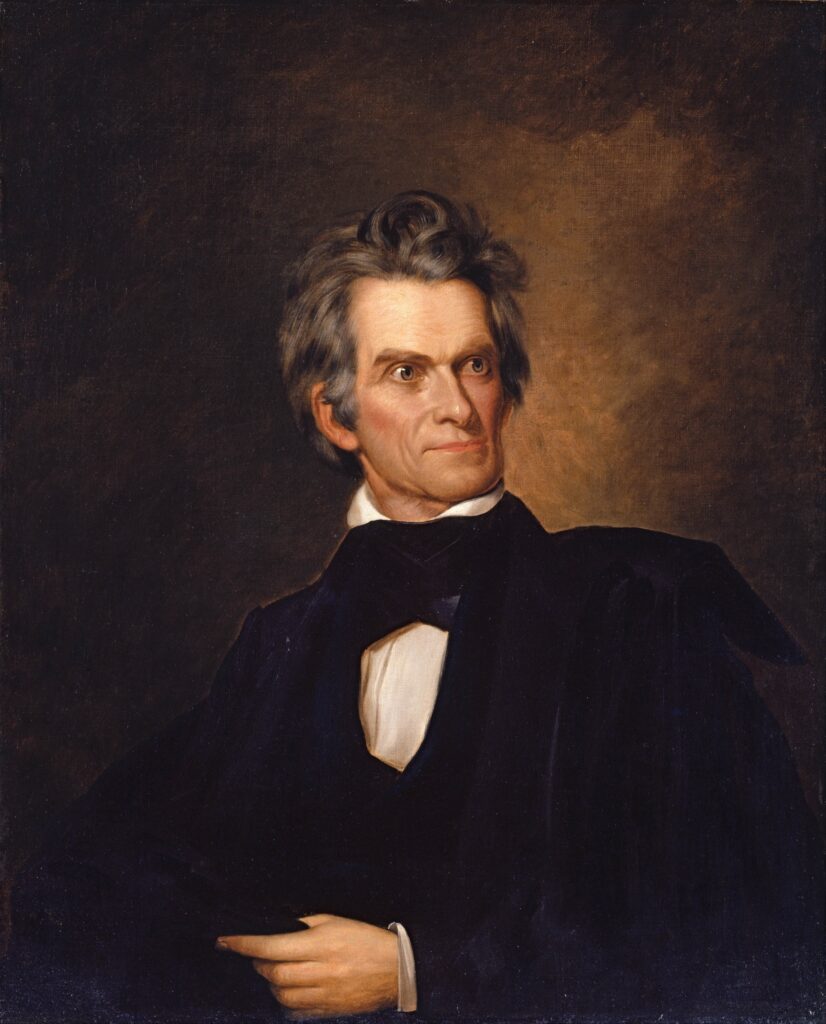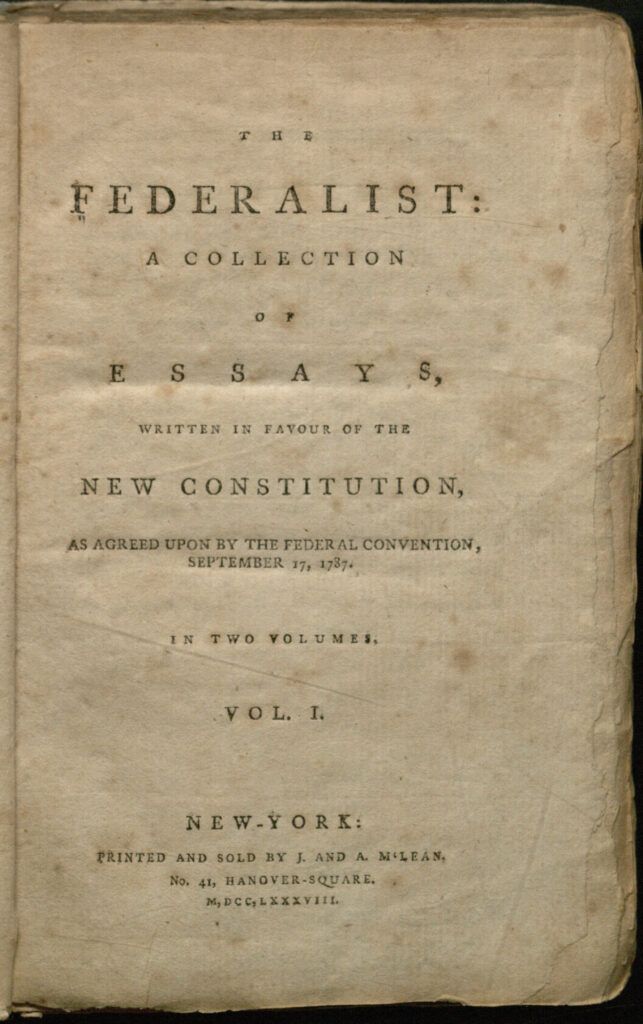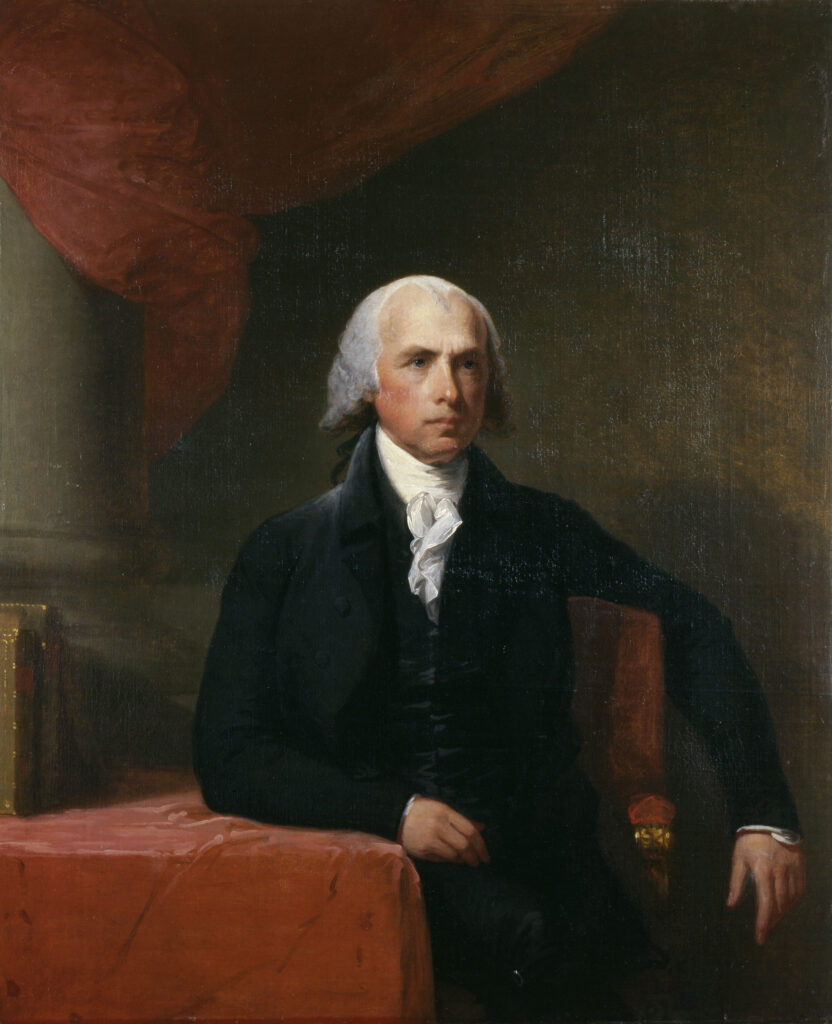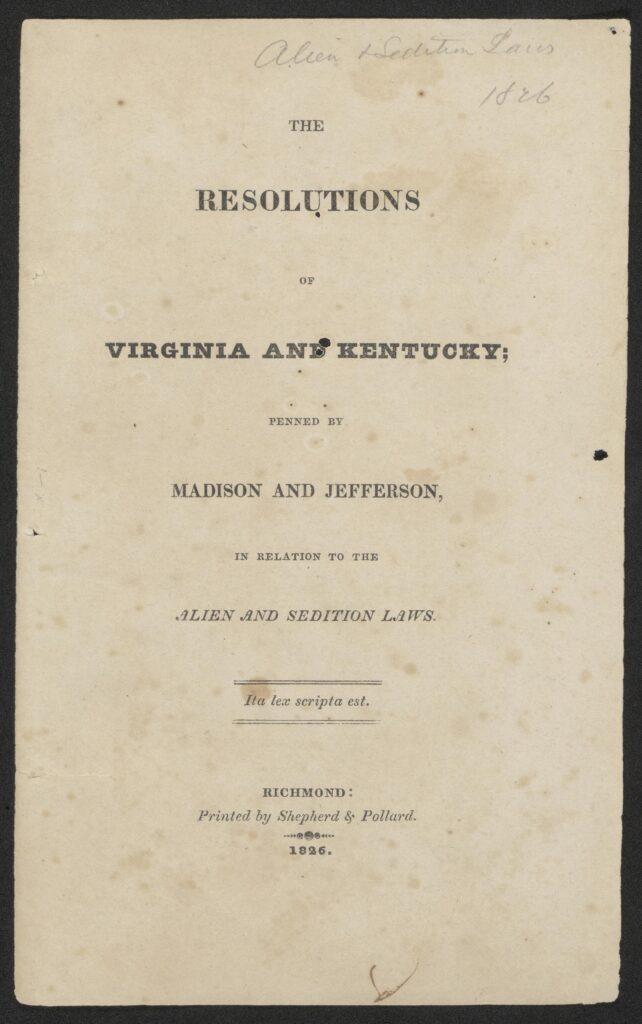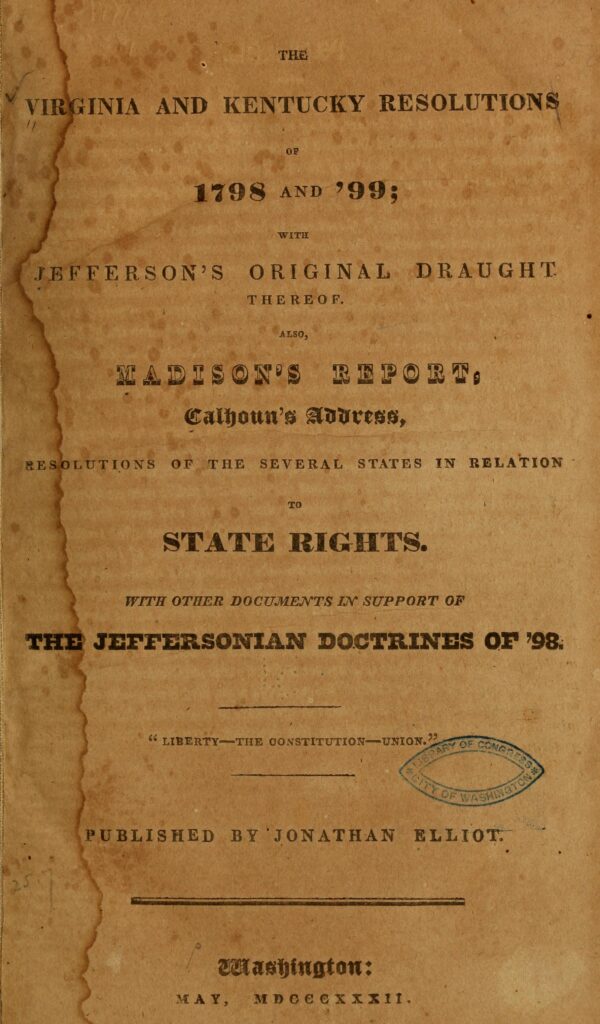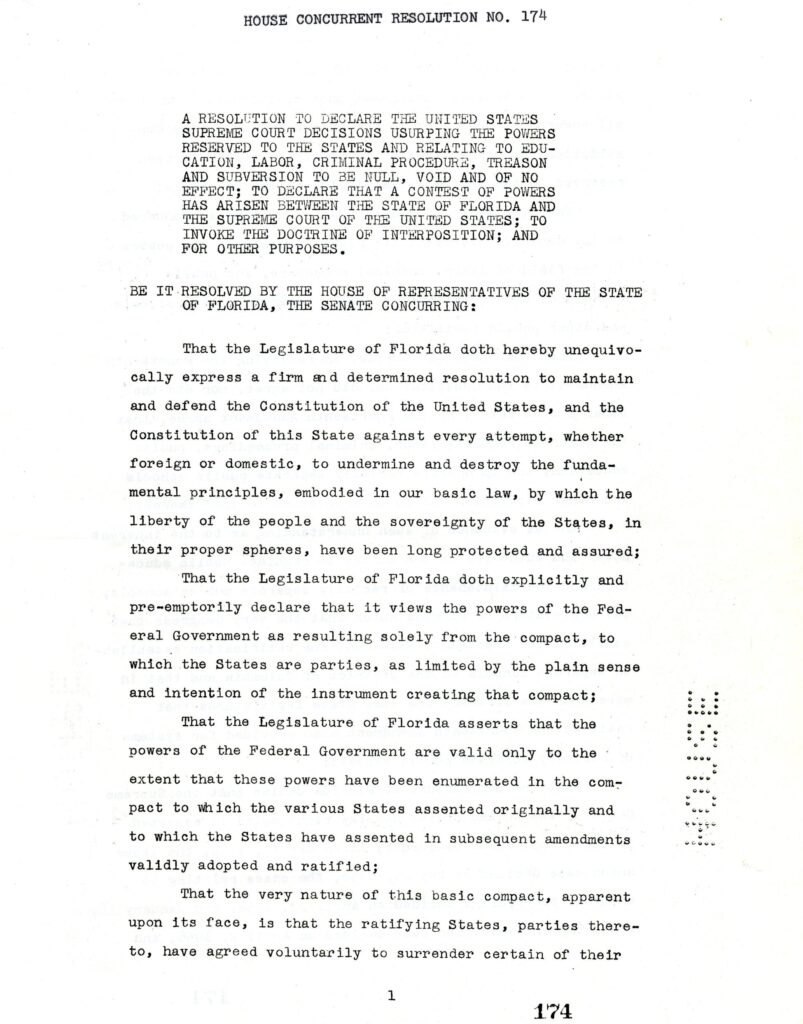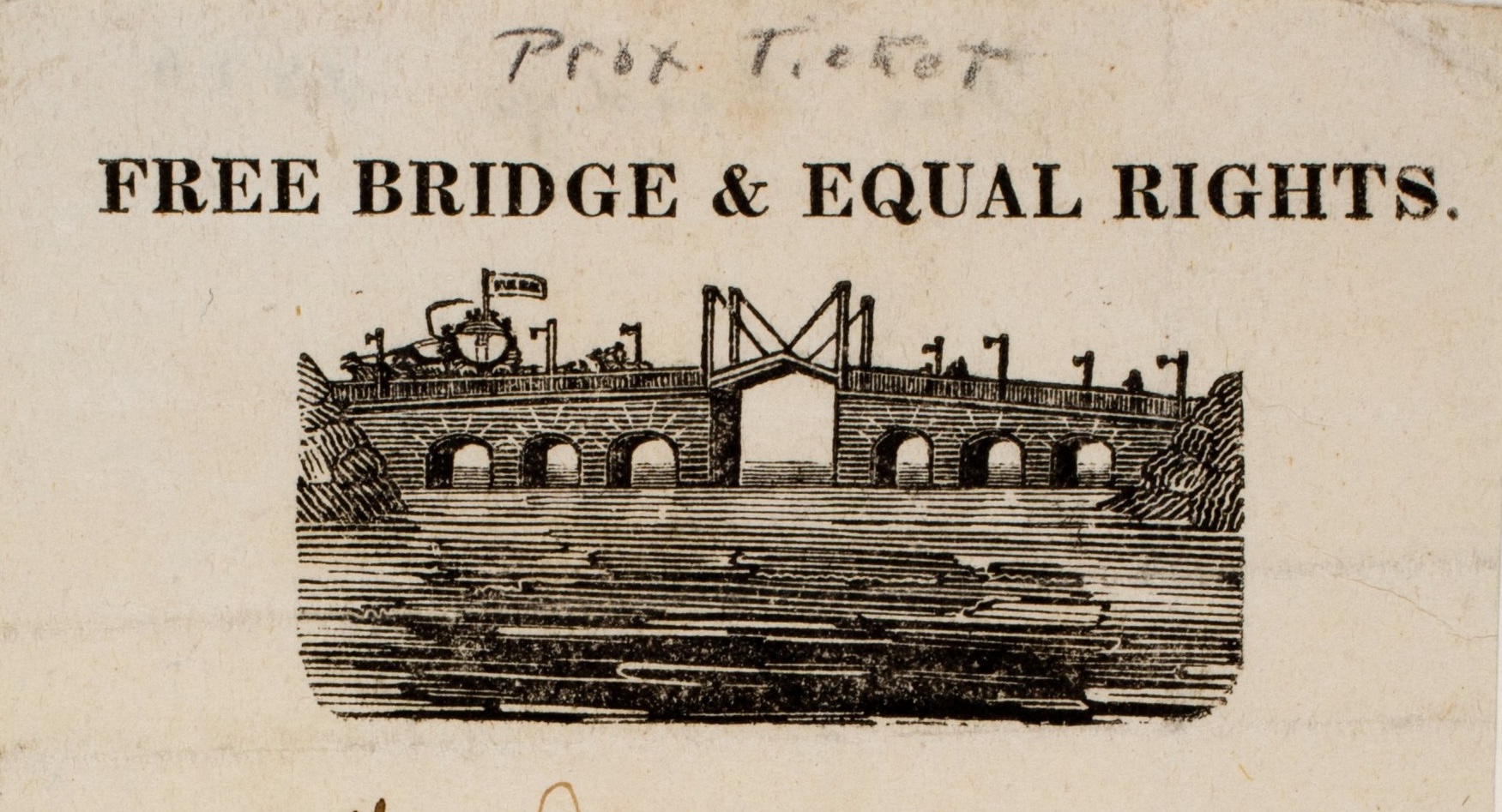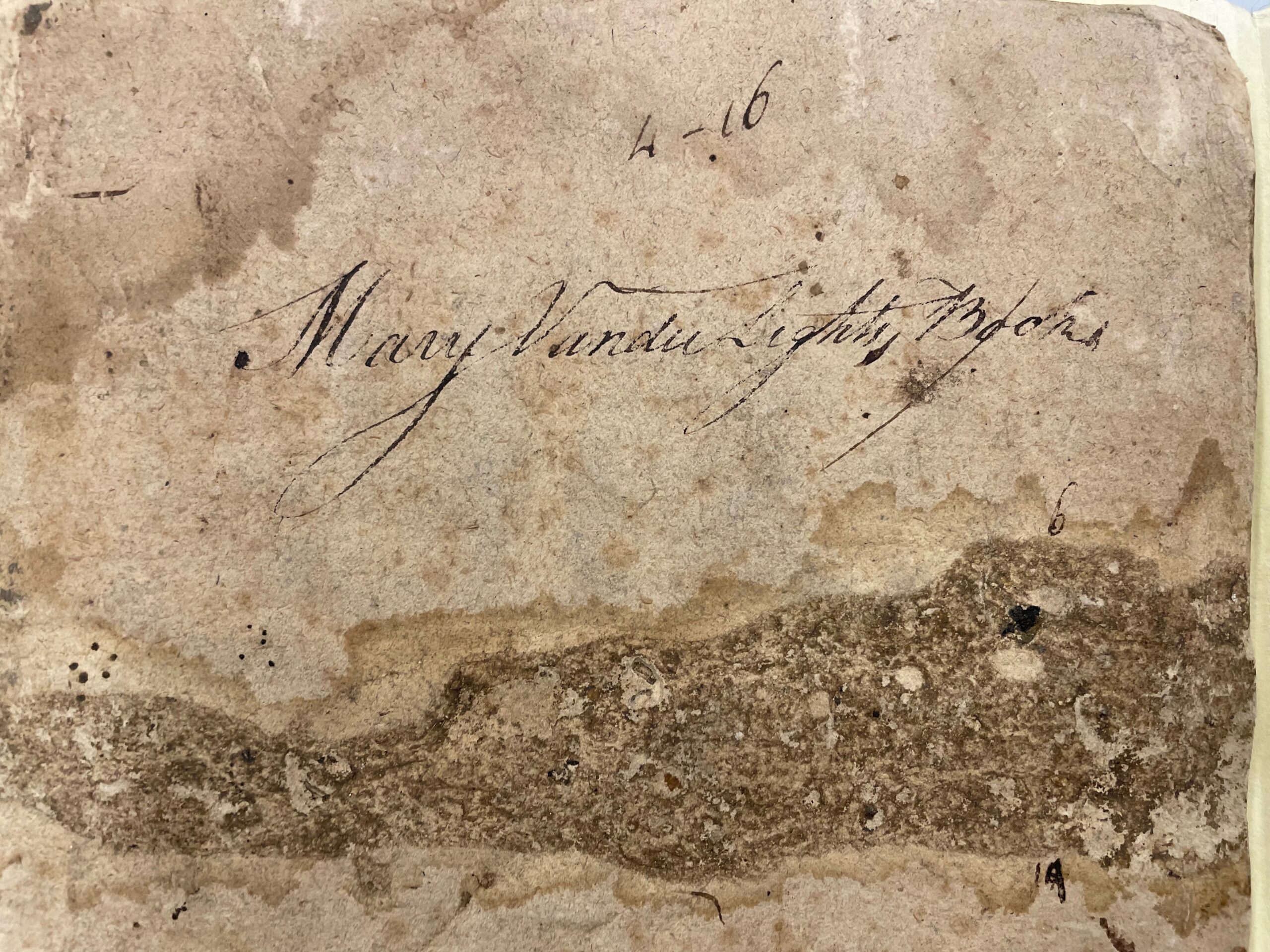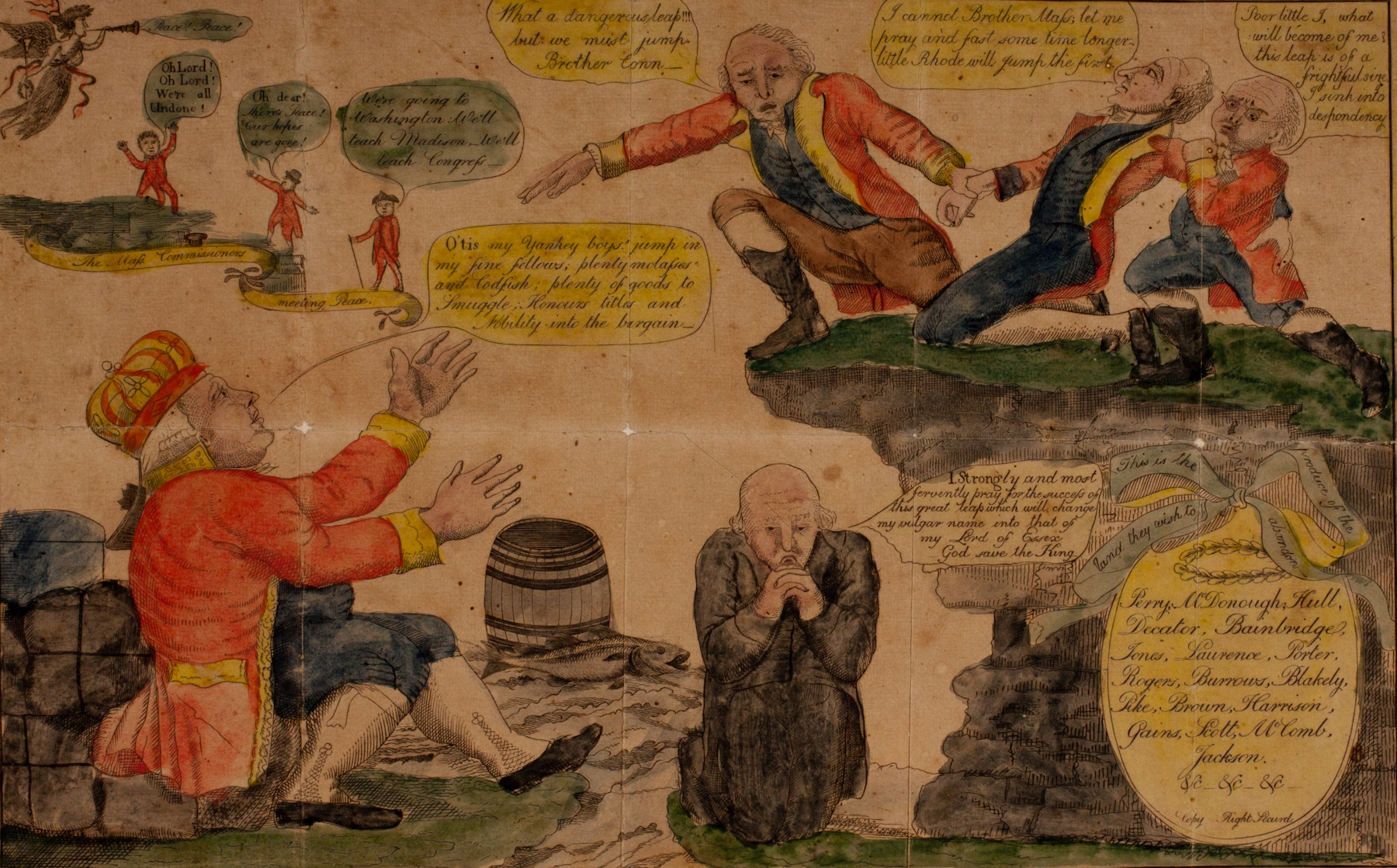Most Americans have never heard of interposition. If they have heard of interposition, they may associate the term with South Carolina Senator John C. Calhoun and the Nullification Crisis in the 1830s in defense of southern states’ rights and slavery—or with anti-school integration opponents of the U.S. Supreme Court decision Brown v. Board of Education of Topeka in 1954.
In the 1830s, Calhoun argued that individual states had the authority to nullify any federal laws that they believed were unconstitutional—a theory that paved the road to the Civil War. Similarly, in the 1950s and 1960s, white supremacists rejected Brown’s mandate to integrate schools and sought to nullify the Supreme Court’s ruling by invoking “interposition.”
Interposition’s alleged complicity with nullifiers and segregationists placed “interposition” under a cloud. But that stigma overlooks the history of interposition as a legitimate constitutional tool that has been used by states throughout our history and which is designed to monitor the equilibrium of federalism established by the Constitution. Equally overlooked is the origin of interposition in The Federalist Papers.
As a constitutional tool, interposition was the formal protest by a state legislature that an action of the national government was unconstitutional. Thus, interposition was a political process involving three elements as described by James Madison and Alexander Hamilton in The Federalist Papers. First, state legislatures were well-placed to act as monitors for the people of the equilibrium of federalism since they represented all of the people of a state and were in frequent communication with the state’s elected members of Congress. Second, state legislatures could identify and declare their perception of any encroachments by the national government on the authority of the state governments—or the rights of the people. Both Madison and Hamilton described this step as sounding the alarm. Third, they envisioned state legislatures initiating interstate efforts to bring widespread attention to the alleged enlargement of the national government’s powers. Neither of them suggested that the “alarm” was a nullification of any acts taken by the national government.
Unlike judicial review, interposition did not have immediate constitutional effect, but was designed to work through political pressure in attempting to maintain an equilibrium between the national and state governments by enabling state legislatures to express and coordinate their discontent over federal laws and measures perceived as constitutional overreaching. Interposition was not a claim that state sovereignty could or should displace national authority, but a claim that American federalism needed to preserve some balance between state and national authority.



